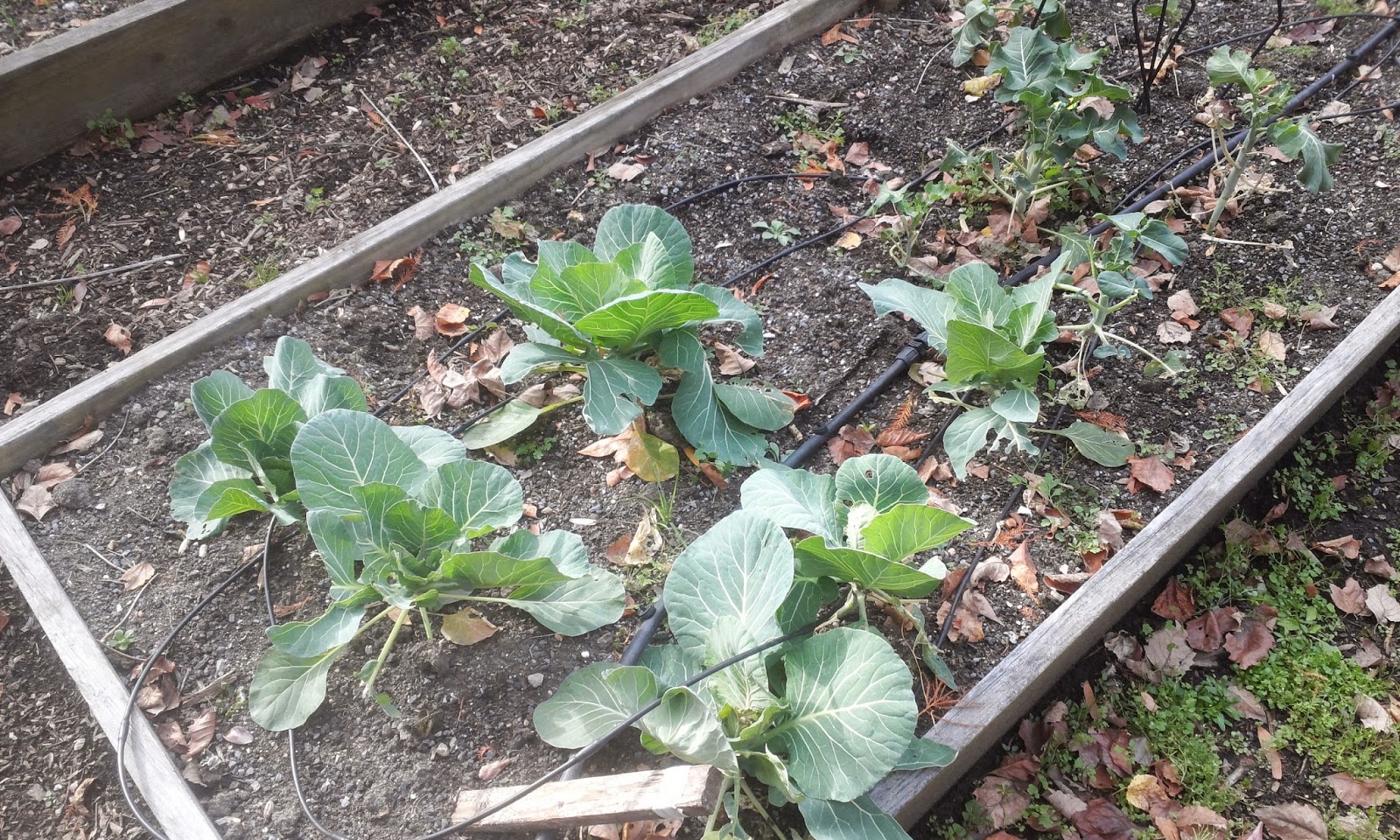Take a close look!
Yes, the zinnias are dead, but look in the foreground. The garlic we planted in October is just flourishing with the cooler temperatures. By June, we should be pulling the garlic up after their bulbs fatten up after the spring.
Here is a write up about growing garlic in Guilford County:
In addition to the garlic, the other vibrant green plants hugging the board to our raised beds on the right are mint. Like garlic and other cool weather crops, mint will survive until a hard frost knocks it back. Freshly harvested mint tea is purely wonderful. Just pick some leaves and steep them in hot water. See, invasive plants can sometimes be more beneficial than we thought.
(12-18-14)
A few shiitake mushrooms continue to emerge, which is why it is important that we constantly monitor our logs. (12-18-14)
The broccoli in the first bed are still putting on some growth and the pathetic looking yacons in the second bed are doing exactly what we want: marking. For now, the dead plants are marking where to dig up the tubers in January. Once again, the tubers can stay in the ground all winter unless the ground freezes.
(12-18-14)


















































